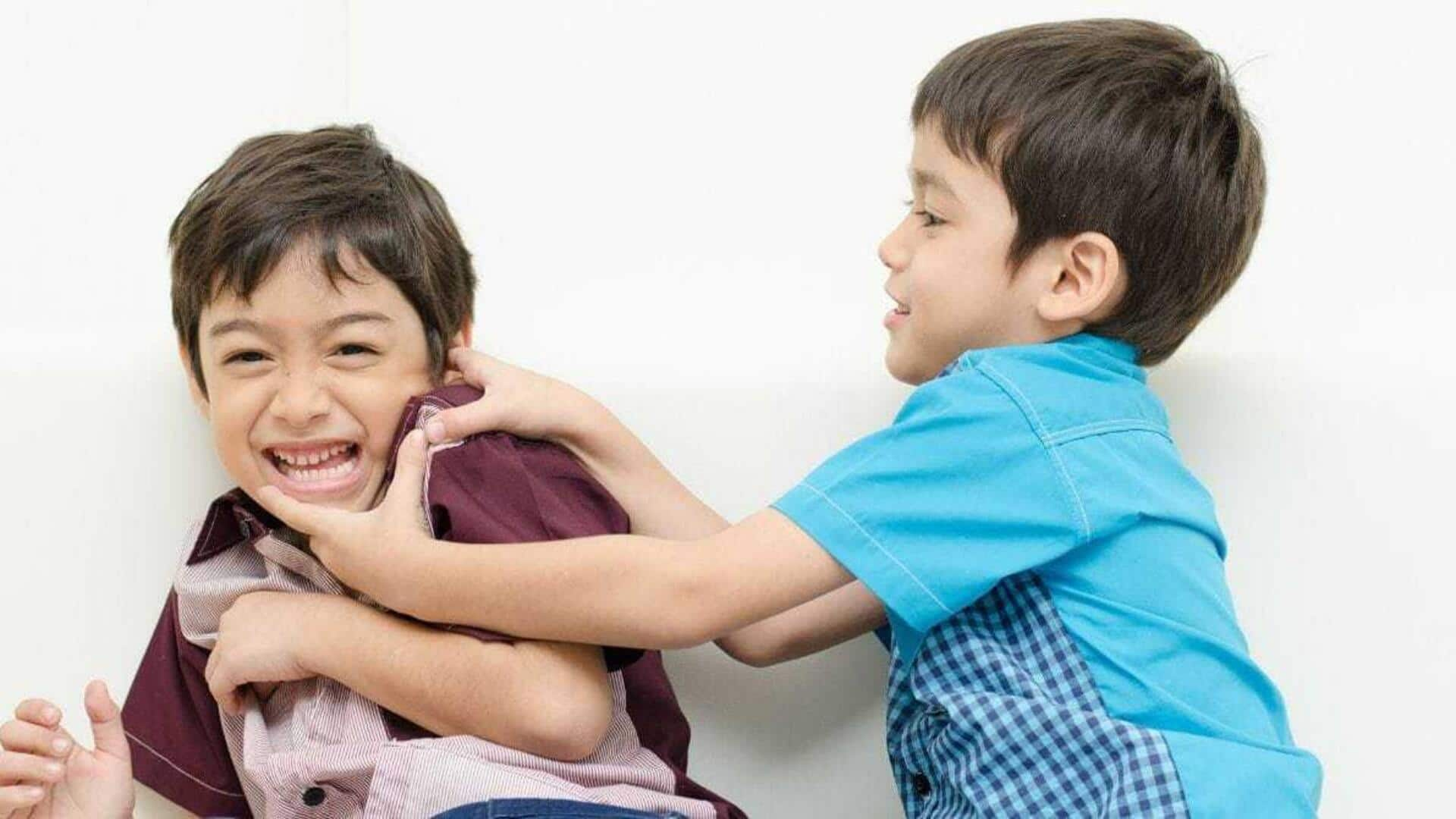
How sibling role-swaps can improve their social skills
What's the story
Sibling role-swaps can be a fun way to boost social skills in children. By switching roles, siblings can learn empathy, communication, and problem-solving skills. These activities encourage kids to see things from another's perspective and develop better interpersonal skills. With simple yet effective role-swaps, parents can help their kids become more socially adept without any complex interventions.
Imaginative roles
Pretend play scenarios
Pretend play is a great way for siblings to step into each other's shoes. By acting out different scenarios, kids can practice communication and cooperation. For example, one sibling could take on the role of a teacher while the other plays a student. This kind of play helps them understand different social dynamics and improves their ability to adapt to various situations.
Task swapping
Household chore exchanges
Swapping household chores is another practical way to teach responsibility and teamwork. When siblings exchange tasks like cleaning or cooking, they learn to appreciate each other's contributions and develop a sense of fairness. This activity not only enhances their problem-solving skills but also fosters a spirit of collaboration as they navigate through the challenges of completing unfamiliar tasks together.
Narrative sharing
Storytelling exchanges
Storytelling exchanges allow siblings to explore creativity and empathy by sharing stories from each other's perspectives. By narrating stories where they switch roles, children can better understand different viewpoints and emotions. This activity encourages active listening and enhances their ability to express themselves clearly, which are essential components of effective communication.
Rule switching
Game rule reversals
Changing game rules between siblings is a fun way to teach flexibility and negotiation skills. When kids have to adapt to new rules or create fair compromises, they learn how to deal with conflicts amicably. This practice not only sharpens their critical thinking but also teaches them the importance of being adaptable in social situations.
Character mimicry
Role model imitation
Imitating positive role models within family settings gives siblings a chance to practice desirable behaviors in safe environments. By observing adults or older siblings who display good manners or problem-solving abilities, younger ones can learn valuable social cues through imitation. This method reinforces positive behavior patterns while giving them real-life examples to emulate in everyday interactions.